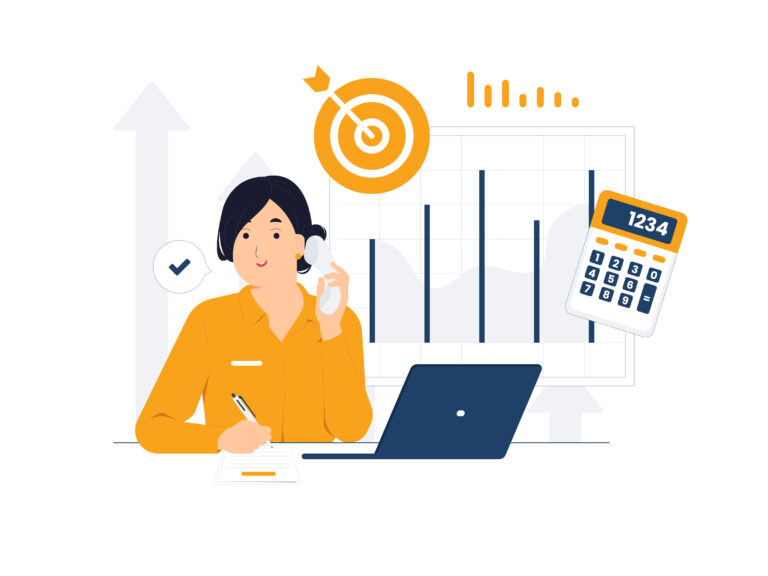Small Business, Big Impact: KPI-Driven Strategies Tailored for Triumphs on Shopify
Published: January 16, 2024 | Case Studies & Guides

In the realm of e-commerce, where giants and newcomers compete for attention, small businesses can carve a significant niche by strategically utilizing Key Performance Indicators (KPIs). This article takes a comprehensive look at the transformative potential of KPI-driven strategies, specifically tailored for success on the Shopify platform. Whether you’re a technical user, an e-commerce entrepreneur, or someone keen on maximizing your online store’s impact, this guide is crafted with your needs in mind.
Understanding the Essence of KPIs in E-commerce
Key Performance Indicators (KPIs) are the heartbeat of any successful e-commerce venture. They are measurable metrics that illuminate the path to success, providing invaluable insights into the performance and health of a business. In the e-commerce context, KPIs serve as a compass, guiding businesses toward areas that demand improvement and those that should be celebrated. When strategically employed, KPIs can be the driving force behind substantial growth on platforms like Shopify.
Key KPIs for E-commerce Triumph
- Conversion Rate:
- The conversion rate stands as a crucial benchmark in the e-commerce landscape, representing the percentage of website visitors who transition from browsers to buyers. It’s not merely a metric; it’s a reflection of your store’s ability to turn casual visitors into paying customers.
- Why it Matters: A high conversion rate implies that your website effectively turns visitors into customers. Strategies to boost this rate include optimizing the checkout process, ensuring clear product information, and building trust through customer reviews and testimonials.
- Customer Acquisition Cost (CAC):
- Customer Acquisition Cost (CAC) is the monetary investment required to acquire a new customer. Beyond mere financial implications, CAC is a strategic indicator that influences the long-term viability and profitability of your business.
- Why it Matters: Keeping CAC low ensures a healthy return on investment for each new customer gained. This involves a mix of targeted marketing, efficient advertising spend, and customer retention efforts to maximize the value of acquired customers.
- Average Order Value (AOV):
- Average Order Value (AOV) is a financial powerhouse, representing the average amount a customer spends per transaction. Elevating AOV is not just about increasing revenue per sale; it’s about optimizing the value each customer brings to your business.
- Why it Matters: Increasing AOV boosts revenue without necessarily increasing customer acquisition. Tactics to enhance AOV include upselling and cross-selling strategies, bundling related products, and offering tiered pricing.
- Customer Lifetime Value (CLV):
- Customer Lifetime Value (CLV) encapsulates the total revenue a business anticipates earning from a customer throughout their entire relationship. It’s a forward-looking metric that underscores the importance of building lasting customer relationships.
- Why it Matters: A high CLV indicates strong customer loyalty and the potential for long-term profitability. Strategies to enhance CLV include personalized marketing, excellent customer service, and ongoing engagement initiatives.
- Cart Abandonment Rate:
- Cart Abandonment Rate reflects the percentage of visitors who express interest by adding items to their cart but abandon the checkout process before completion. Unraveling the mysteries behind this phenomenon is critical for recovering potentially lost revenue.
- Why it Matters: Understanding and reducing cart abandonment can significantly increase revenue. Tactics to address this issue include implementing a streamlined checkout process, sending targeted abandonment emails, and utilizing exit-intent pop-ups.
Implementing KPI-Driven Strategies on Shopify
Now that we’ve uncovered the significance of these KPIs, let’s delve into practical strategies to implement them effectively on the Shopify platform.
- Optimizing the Customer Journey:
- The customer journey is the backbone of any e-commerce venture, and on Shopify, optimizing this journey is a game-changer. From the initial point of contact to the final checkout, every step must be designed with the user in mind.
- Strategies:
- Streamline the buying process on your Shopify store to reduce friction and encourage conversions.
- Implement a user-friendly interface and ensure a seamless transition from product browsing to checkout.
- Utilize Shopify’s analytics to identify drop-off points in the customer journey and address them proactively.
- Smart Marketing Campaigns:
- In the digital age, marketing is not just about reaching your audience; it’s about reaching the right audience at the right time. With the wealth of data provided by Shopify’s analytics, your marketing campaigns can be laser-focused and highly effective.
- Strategies:
- Utilize data from KPIs to refine and target marketing efforts.
- Tailor campaigns to specific customer segments, focusing on improving both conversion rates and AOV.
- Implement A/B testing to optimize the performance of marketing campaigns based on real-time KPI data.
- Leveraging Analytics Apps:
- Knowledge is power, and in e-commerce, data is the key to unlocking that power. Integrating analytics apps on your Shopify store provides a real-time window into your business’s performance, allowing you to make informed decisions and stay ahead of the competition.
- Strategies:
- Integrate analytics apps on your Shopify store to monitor and analyze KPIs in real-time.
- Regularly review and analyze performance data to identify trends and areas for improvement.
- Stay informed about new analytics features and tools offered by Shopify to continually enhance your data-driven decision-making process.
- Enhancing Customer Engagement:
- Customer engagement is not a one-time effort but an ongoing relationship-building process. On Shopify, fostering a strong connection with your customers can turn first-time buyers into loyal advocates for your brand.
- Strategies:
- Implement strategies to engage customers post-purchase, such as personalized emails, loyalty programs, and exclusive offers.
- Foster a community around your brand, increasing CLV and encouraging repeat business.
- Leverage Shopify’s customer data to personalize communications and offers based on individual preferences and purchase history.
- Addressing Cart Abandonment:
- Cart abandonment is the bane of every e-commerce store, but on Shopify, it’s a challenge that can be effectively tackled. Understanding why potential customers abandon their carts is the first step towards recovering these lost opportunities.
- Strategies:
- Identify the reasons behind cart abandonment using Shopify’s analytics.
- Implement targeted solutions, such as abandoned cart emails or exit-intent pop-ups, to recover potential lost sales.
- Continuously test and optimize the checkout process to minimize friction and encourage completion.
In conclusion, for small businesses aiming for a big impact on platforms like Shopify, a KPI-driven approach is not just a choice but a necessity. By consistently monitoring and optimizing metrics like conversion rate, CAC, AOV, CLV, and addressing cart abandonment, businesses can unlock new levels of success. Embrace the power of data, implement strategic changes, and watch your small business make a big impact in the competitive world of e-commerce.
At geekspeak Commerce, we recognize the unique challenges that small businesses face in the ever-evolving e-commerce landscape. Our team of experts is dedicated to empowering small businesses to not just survive but thrive on platforms like Shopify. We understand the intricacies of KPI-driven strategies and can tailor solutions that align with your specific business goals. Connect with us to unlock the full potential of your Shopify store.
Connect with geekspeak Commerce to learn more about unleashing the power of KPI-driven strategies for your Shopify store.







